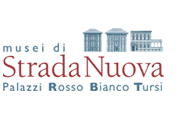The “Mezzarie” in Palazzo Rosso: a private space in a superb dwelling
Between the first and second noble floors of Palazzo Rosso there is a small apartment on a mezzanine (“Mezzarie” in ancient Italian), located just below the "Seasons” rooms.
Starting from 1705, Anton Giulio II Brignole Sale and later his son Gio. Francesco II have this apartment decorated. It is a rather unusual space, a sequence of rooms much smaller in proportions than the sumptuous halls of the two noble floors, and evidently intended for private use: a first room perhaps intended to house a collection of paintings, a dining room called “della Grotta” for its decoration, which leads to a bedroom with an alcove flanked by a bathroom and a dressing room; and a living room decorated with mirrors.
The apartment represents a unicum among the interiors of the Palazzi dei Rolli, and offers an extraordinary point of view on the daily living spaces of the aristocrats who lived in the building: a place of luxury, refinement and elegance that the public can finally admire.
Anton Giulio II commissions to French artisans at least part of the oriental-style decoration of the first room; while the frescoes are by Gregorio De Ferrari.
The documents indicate that the two sculptural groups dedicated to the stories of Jupiter in the form of a swan with Helen and Pollux and the wolf with Romulus and Remus respectively by Bernardo Schiaffino and Francesco Biggi were destined for these rooms; after being in display at the "SuperBarocco" exhibition of the Scuderie del Quirinale in Rome, now the works are back in the Sala della Grotta delle Mezzarie.
The frescoes and paintings on wood in the Sala della Grotta, dedicated to Stories of Helen, are the work of Domenico Parodi.
The bedroom still sees Domenico Parodi at work for the frescoes, while the extraordinary alcove was probably born on a project by Gregorio De Ferrari, with the spectacular decoration that pretends a large flowery drape in stucco, the covering of mirrors on the walls and a parquet in an exceptional state of conservation.
The sudden death of Anton Giulio II, in 1710, interrupts the works, which are resumed by his son Gio.Francesco II around 1745; Gio.Francesco calls the painter Giacomo Boni for the creation of the living room covered with mirrors and furnished with small Regency style consoles.




